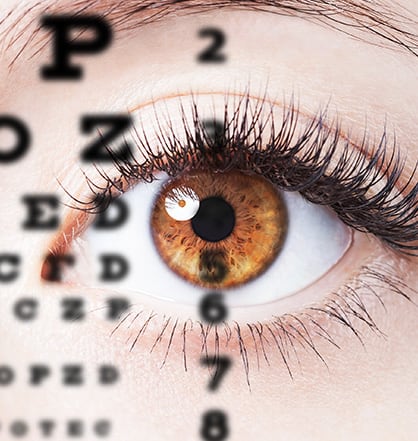

Many eye diseases can develop over long periods without showing any obvious symptoms. Over time, however, they can damage your eyes and cause permanent vision loss.
At Eyes Harvest Hills, we diligently search for signs of eye disease during each of our comprehensive eye exams. We use advanced technology designed to detect the warning signs of eye disease before you lose your vision. Diagnosing these issues early can protect your vision throughout the years, and all you have to do is book an eye exam.
Glaucoma is a common eye disease that generally occurs when elevated intraocular pressure (IOP) damages your optic nerve. But, it can also develop without raising your IOP levels.
There are 3 common types of glaucoma: open-angle, closed-angle, and normal-tension. Open-angle glaucoma develops slowly, while closed-angle glaucoma can happen rapidly. Normal-tension glaucoma damages your optic nerve without raising your IOP levels.
For more information about glaucoma and how we detect it, please visit our glaucoma page.
Age-related macular degeneration (AMD) is an eye disease that damages your macula, that part of your retina responsible for your central vision. Aging is a major risk factor for AMD, but diabetes and smoking can also increase your risk.
There are 2 types of AMD:
Diabetic retinopathy occurs when high glucose levels in your blood damage the blood vessels behind your retina, causing them to leak or swell. In severe cases, your retina may develop new yet delicate blood vessels, which could leak fluids into your vitreous humour or cause scar tissue, increasing your chance for retinal detachment.
Please visit our diabetes page for more information.
Cataracts are an eye condition that occur when your crystalline lens becomes rigid and opaque, turning them hazy or milky in colour. Cataracts develop as you age, but they can occur in young children as well.
Please visit our cataracts page for more information.
Tonometry allows our doctors to measure your IOP levels so they can diagnose glaucoma. Our practice uses the Goldmann Applanation Tonometer and Icare tonometer to ensure we are getting the most accurate readings possible.
Please visit our glaucoma page for more information on these devices.
Optomap retinal imaging, sometimes known as laser imaging, allows us to look at 82% of your entire retina all at once. This device can help us diagnose a range of eye diseases and conditions.
Ocular coherence tomography (OCT) is an imaging technique similar to an ultrasound. However, instead of using sound, OCT uses light to generate highly detailed cross-sectional images of your retina. This tool allows us to detect signs of diabetic eye disease.
Anterior segment photography allows our team to take a detailed look at the health of your anterior segment, the front part of your eye that includes the iris, lens, and cornea. This device is especially useful for detecting issues like cataracts.
You deserve eye care that delivers. Contact us today and get help managing your eye conditions.



